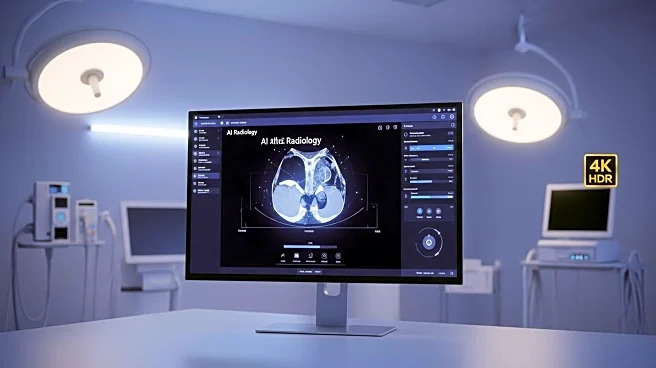What's Happening?
A new deep learning classifier has been developed to screen multiple retinal diseases using optical coherence tomography (OCT) imaging. The study utilized four datasets, including private and public sources, to train and validate the model. The classifier aims to improve the detection of various retinal conditions such as age-related macular degeneration (AMD), diabetic macular edema (DME), and other pathologies. The model employs advanced techniques like FlexiVarViT architecture to handle high-resolution data without resizing, preserving image quality and enhancing classification performance.
Why It's Important?
This development represents a significant advancement in the field of ophthalmology, potentially improving diagnostic accuracy and efficiency for retinal diseases. The ability to screen multiple conditions simultaneously could lead to earlier detection and treatment, reducing the risk of vision loss. The integration of deep learning in medical imaging aligns with broader trends in healthcare technology, offering scalable solutions for disease management. This innovation could benefit patients, healthcare providers, and researchers by providing more reliable and comprehensive diagnostic tools.
What's Next?
Further validation and testing of the model across diverse populations and imaging conditions are expected. The successful implementation of this technology in clinical settings could lead to widespread adoption, transforming retinal disease screening practices. Collaboration between technology developers and healthcare institutions will be crucial to ensure the model's integration into existing diagnostic workflows.
Beyond the Headlines
The ethical implications of using AI in medical diagnostics, including data privacy and the potential for algorithmic bias, will need to be addressed. Ensuring that AI models are transparent and accountable will be essential for gaining trust among healthcare professionals and patients.










